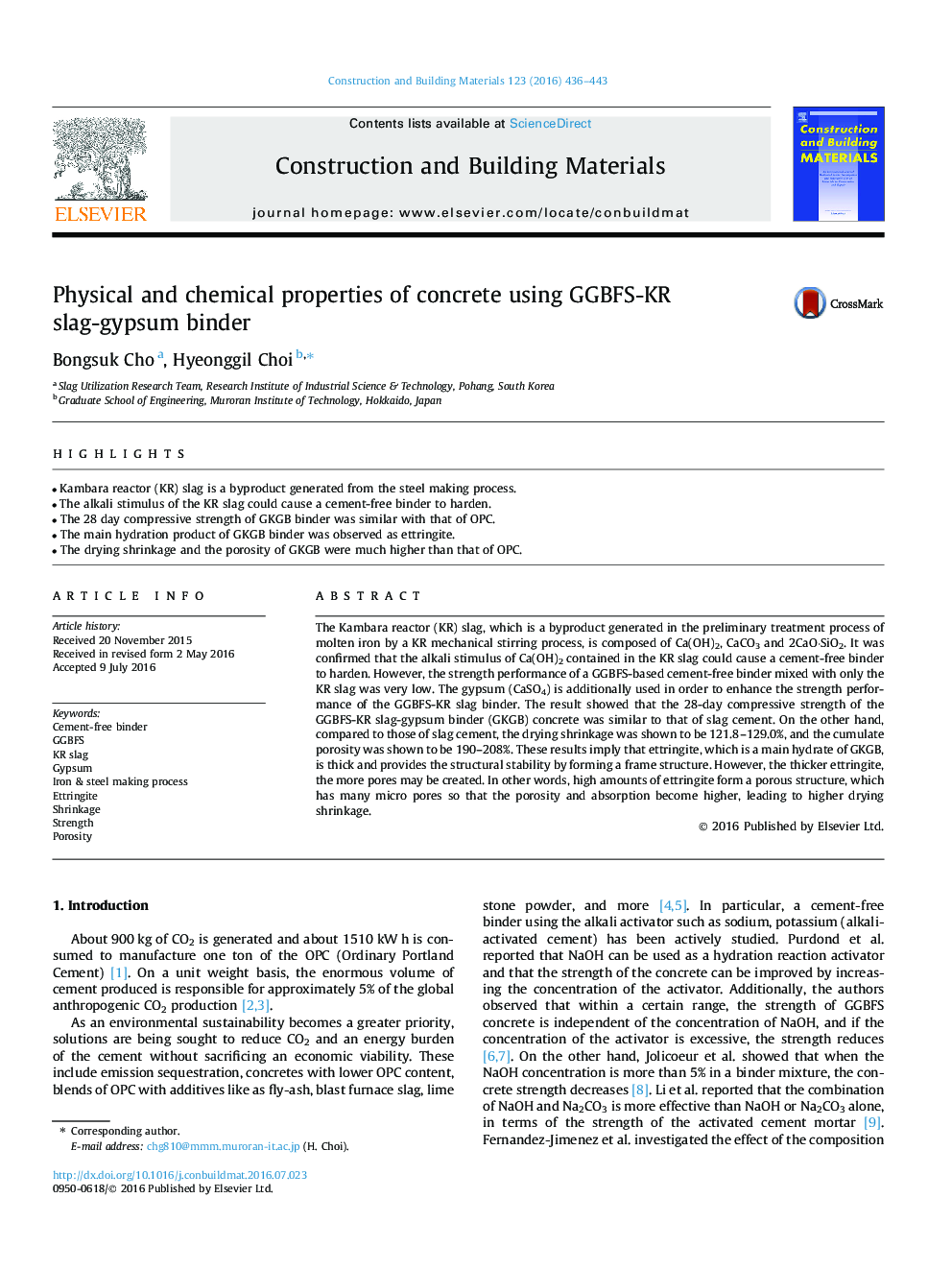| کد مقاله | کد نشریه | سال انتشار | مقاله انگلیسی | نسخه تمام متن |
|---|---|---|---|---|
| 255768 | 503530 | 2016 | 8 صفحه PDF | دانلود رایگان |

• Kambara reactor (KR) slag is a byproduct generated from the steel making process.
• The alkali stimulus of the KR slag could cause a cement-free binder to harden.
• The 28 day compressive strength of GKGB binder was similar with that of OPC.
• The main hydration product of GKGB binder was observed as ettringite.
• The drying shrinkage and the porosity of GKGB were much higher than that of OPC.
The Kambara reactor (KR) slag, which is a byproduct generated in the preliminary treatment process of molten iron by a KR mechanical stirring process, is composed of Ca(OH)2, CaCO3 and 2CaO·SiO2. It was confirmed that the alkali stimulus of Ca(OH)2 contained in the KR slag could cause a cement-free binder to harden. However, the strength performance of a GGBFS-based cement-free binder mixed with only the KR slag was very low. The gypsum (CaSO4) is additionally used in order to enhance the strength performance of the GGBFS-KR slag binder. The result showed that the 28-day compressive strength of the GGBFS-KR slag-gypsum binder (GKGB) concrete was similar to that of slag cement. On the other hand, compared to those of slag cement, the drying shrinkage was shown to be 121.8–129.0%, and the cumulate porosity was shown to be 190–208%. These results imply that ettringite, which is a main hydrate of GKGB, is thick and provides the structural stability by forming a frame structure. However, the thicker ettringite, the more pores may be created. In other words, high amounts of ettringite form a porous structure, which has many micro pores so that the porosity and absorption become higher, leading to higher drying shrinkage.
Journal: Construction and Building Materials - Volume 123, 1 October 2016, Pages 436–443